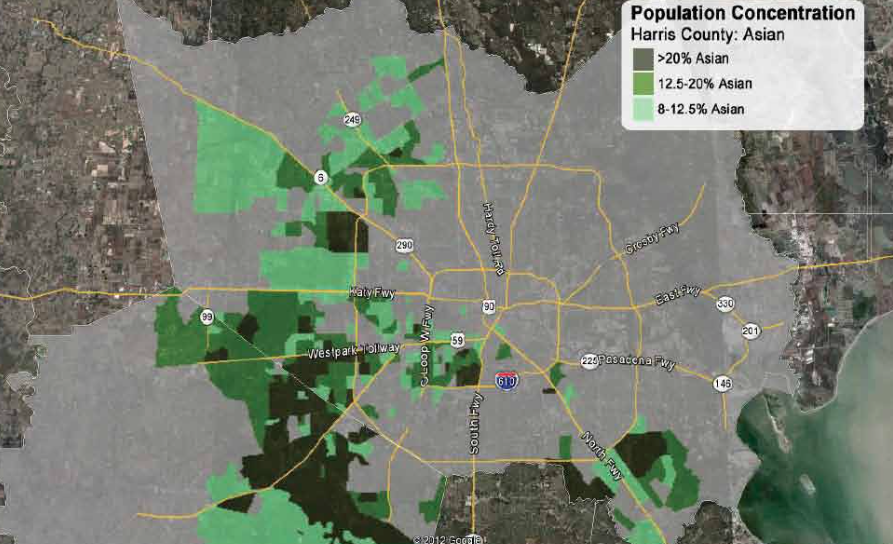Known as one of the most diverse metropolitan areas in the country, Houston has, in many ways, foreshadowed the demographic shift occurring nationwide as the United States becomes less white.
The latest Census numbers help illustrate that point: the fastest-growing racial/ethnic group in the Houston region is the Asian population.
Each major ethnic group in greater Houston saw a population increase from 2014 to 2015, but the Asian population is growing the fastest, with 5.7 percent annual growth.
That's a slight slowdown from the 7.3 percent increase between 2013 and 2014, possibly due to the negative effect the oil slump is having on the local economy. Nevertheless, greater Houston's population grew, adding roughly 166,700 resident between 2014 and 2015, according to the recently released estimates. Of that total, Asians accounted for 16 percent of total population growth, or roughly 26,700 people.
Though they still represent the smallest major racial and ethnic group in the metropolitan area, their overall numbers grew more between 2014 and 2015 than the area's black population, which added roughly 24,400 people. The Hispanic community, meanwhile, added some 73,200 people while the white population increased by 30,000.
What that means is that the white population, though more or less the same size as the Hispanic population today, grew the slowest -- increasing by just over 1 percent. The decreasing share of the city's white population mirrors a national transformation.
Houston is mirroring national trends. Nationally, Asian immigrants actually surpassed the percentage of immigrants with Hispanic origins just before 2010, according to an analysis by the Pew Research Center. And Asian-Americans are the fastest growing racial group in the country. Nationally, these trends held true in the latest estimates: nationally, the Asian population grew by 3.5 percent while the next fastest growing group was Hispanics with a 2.2 percent increase. The country's white population, meanwhile, increased by less than 0.1 percent.
But the Houston area's Asian population grew even faster than that. In Houston, as in the rest of the country, the majority of Asian-Americans are foreign-born. In the latest estimates, some 71 percent of Asian-Americans in the Houston area were born outside the United States. Nationally and locally, Asian-Americans tend to be well-educated and have the highest incomes. In Houston, the median income for an Asian-American-headed household was $80,334 in 2015, well above the area's median household income of $61,465.
But the story of the growth of Houston's Asian community has happened largely outside the city limits, primarily in unincorporated Harris County as well as nearby Sugar Land, which is 37.5 percent Asian, according to the 2015 estimates.
Roughly 31 percent of Harris County's Asian population is of Vietnamese descent. Vietnamese refugees came to the Houston area after the communist takeover of South Vietnam in 1975. Over time, they became a powerful political force in the region.
In Fort Bend County, where the population of Asian-Americans has risen even more rapidly than in Harris County, only 14.5 percent of Asian-Americans are of Vietnamese backgrounds. Instead, Indian-Americans represent 37 percent of the Asian-American population there, according to 2014 estimates, the most recent numbers available.
While many of the area's Vietnamese population first came to Houston as refugees, Indian immigrants came largely through legislation that allowed them to qualify as "professionals of exceptional ability," according to a 2013 Kinder Institute report on the area's Asian population. It is perhaps unsurprising, then, that Indian-Americans reported much higher incomes than Vietnamese-Americans in the report's survey data, with 36 percent making more than $75,000.
The area is also home to large Chinese and Filipino communities. While they have achieved relative success, notes the report, "Asians share with Latinos and African Americans a high level of support for government initiatives designed to enhance economic and social justice, in the belief that collective action is needed to strengthen the safety net and to moderate the inequalities generated by an unfettered free-enterprise system." As with the nation, they have had and will continue to shape the Houston area's cultural and political landscape.

